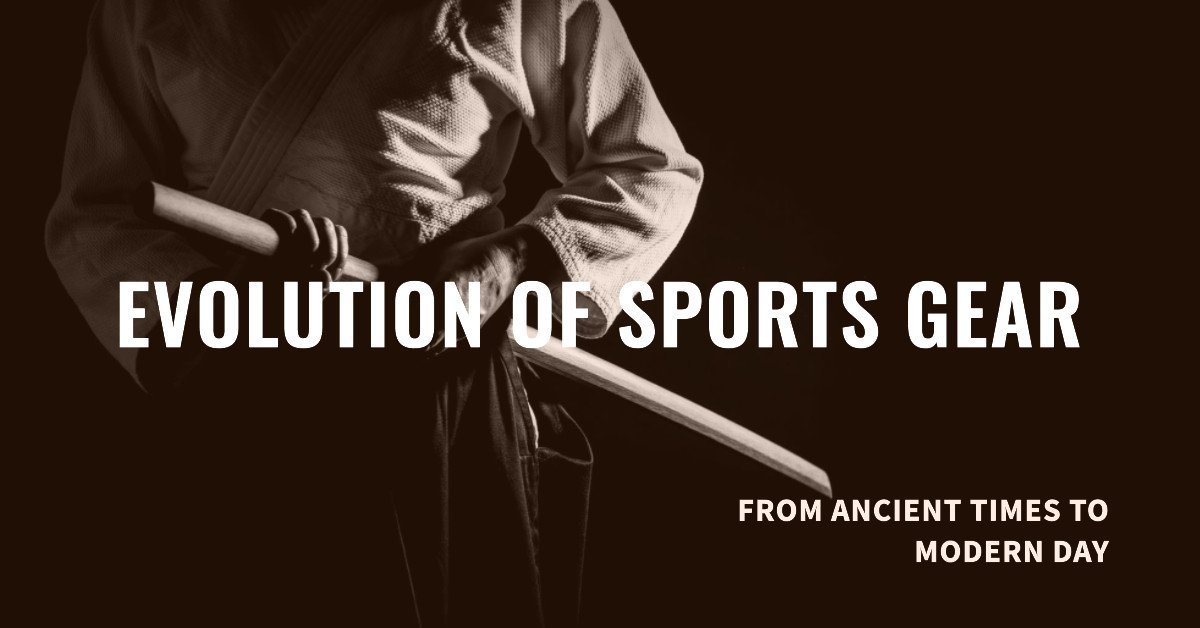In the realm of sports, equipment plays a pivotal role in both enhancing an athlete’s performance and ensuring their safety. Over the years, the evolution of sports gear has been nothing short of remarkable, transforming the way athletes train, compete, and recover.
Table of Contents

Historical Evolution of Sports Equipment
The journey of sports equipment from its rudimentary beginnings to today’s advanced tools is a testament to human innovation and the relentless pursuit of excellence. Some key milestones include:
- The use of basic tools made from natural materials, such as wooden bats and leather balls.
- The introduction of protective gear like helmets, initially made from leather, to shield players from injuries.
- The transition to more durable and effective materials is driven by technological advancements and a deeper understanding of biomechanics.
Detailed insights on the evolution of sports equipment offer a comprehensive look into how these tools have transformed over the years.
Advancements in Protective Gear
Protective gear, a cornerstone in the evolution of sports gear, has seen significant advancements, especially in high-contact sports:
- Football: The sport has come a long way since its inception. Helmets, which were once mere leather caps, have evolved into sophisticated protective gear designed to minimize the risk of concussions and other head injuries.
- Hockey: Modern helmets, designed to reduce the risk of concussions, are a far cry from their earlier counterparts. The sport has also seen innovations in pads, guards, and skates, all aimed at enhancing player safety without compromising on performance.
The drive to improve safety in sports is not just about equipment. The introduction of therapeutic tapes, braces, and other recovery tools has played a crucial role in helping athletes recover faster and more effectively. Technological advancements in modern sports gear delve deeper into the innovations that have shaped today’s sports landscape.
This portion of the article provides an overview of the evolution of sports gear, emphasizing the importance of protective equipment and the role of technology in driving these advancements.
Technological Innovations in Sports Gear
The evolution of sports gear is not just about protection; it’s also about enhancing performance. With the advent of technology, the sports industry has witnessed a paradigm shift in equipment design and functionality:
- Materials: From synthetic fibers to carbon composites, the choice of materials has expanded, offering athletes gear that’s both lightweight and durable.
- Design: Computer-aided design (CAD) and biomechanical studies have led to equipment that complements an athlete’s natural movements, optimizing performance.
- Wearables: The rise of smart wearables, such as fitness trackers and performance monitors, allows athletes to gather data, analyze their performance, and make informed decisions.
Technological advancements in modern sports gear provide a deeper insight into how cutting-edge innovations are shaping the future of sports.

Sports Gear: A Comparative Analysis
To truly appreciate the evolution of sports gear, one must look at the transformation of specific equipment over the years:
- Track Cycling:
- Past Gear: Heavy, rigid bikes with minimal aerodynamic design.
- Modern Gear: Lightweight carbon-fiber bikes with aerodynamic profiles for maximum speed.
- Football:
- Past Gear: Basic leather helmets, minimal padding.
- Modern Gear: Advanced helmets with impact-absorbing technology, ergonomic pads, and high-traction shoes.
- Winter Sports:
- Past Gear: Basic wooden skis and sleds.
- Modern Gear: Specialized equipment like fiberglass sleighs, tailored for specific winter sports to enhance performance and safety.
The transformation in sports equipment is evident when one compares the past and present. It’s a testament to human ingenuity and the relentless pursuit of excellence. For a more detailed look into the transformation of gear in winter sports, visit The evolution of sports equipment at the Winter Games.
FAQs on the Evolution of Sports Gear
The evolution of sports gear has piqued the interest of many, leading to a plethora of questions. Here are some frequently asked questions and their answers:
How has sporting equipment changed over time?
How has football gear changed over time?
What is the history of protective sports equipment?
What item was initially used as a pie plate before becoming a piece of sporting apparatus?
Conclusion: The Future of Sports Ger
The evolution of sports gear is a testament to mankind’s relentless pursuit of excellence. As sports continue to push the boundaries of human potential, the gear will undoubtedly evolve to meet new challenges. With advancements in technology, materials, and design, the future of sports gear looks promising. Athletes can look forward to equipment that not only enhances their performance but also ensures their safety on the field.
